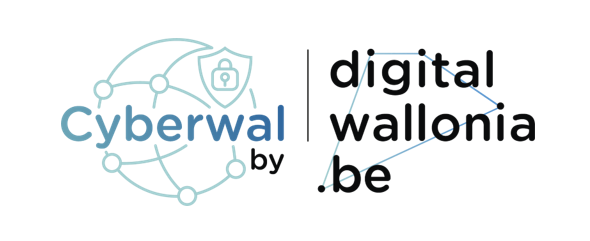Publications
Cyber attacks are increasing, causing financial losses, data breaches, and reputational damage for individuals and organizations. Since human error remains the leading cause, raising awareness of cyber threats is essential. Cyber range scenarios aim to mitigate these risks but often fail to… Read more
We propose a novel adaptive self-guarded honeypot called Asgard2.0,
designed to capture shell-based attacks on real Linux-based systems via
remote SSH access and to automatically recover when severely compromised.
Asgard2.0 leverages Deep Q-Networks (DQN), a Deep… Read morePolka is a post-quantum public-key encryption scheme from PKC 2023, designed in order to be efficiently protected against side-channel attacks. Its motivation arises from the acknowledged difficulty of protecting Kyber against such attacks. Concretely, the structure of Polka aims to allow so-… Read more
In 2001, Hirt proposed a receipt-free voting scheme, which
prevents malicious voters from proving to anybody how they voted, under
the assumption of the availability of a helping server that is trusted for
receipt-freeness, and only for that property. This appealing design led to
a… Read moreWe design new encryption mechanisms that enable the design of the first universally verifiable voting schemes, supporting both receipt-freeness and everlasting privacy without assuming the existence of an anonymous channel.
Our schemes support the two most traditional election tallying… Read more
opn.vote is a publicly verifiable e-voting system that mitigates the single point of failure in traditional bulletin board architectures by moving critical processes to a public blockchain. Using Ethereum's Account Abstraction, it lets voters cast and re-cast ballots without wallets or… Read more
A honeypot is a security tool which is deliberately designed to be vulnerable, enticing attackers to probe, attack, and compromise it. It has been used since the early 1990s to capture cyberattacks. Today, it remains one of the most widely used security tools, alongside other security mechanisms… Read more
The security of smart contracts, a fundamental component of decentralized applications (dApps) on blockchain platforms, remains a critical concern due to the risk of severe financial losses from vulnerabilities. Traditional detection methods, such as fuzzing and symbolic execution, are effective… Read more
La pression des contraintes réglementaires sur les systèmes d’informations est en
croissance ces dernières années. À l’échelle communautaire, plusieurs actes législatifs
introduisent des exigences ciblant spécifiquement les systèmes d’informations. Nous
pouvons penser notamment à la… Read more- In recent years, there has been a growing regulatory burden on information systems. Simultaneously, the process of implementing these regulations remains a cumbersome activity. This paper addresses the… Read moreLa pression des normes juridiques sur les systèmes d’information est en croissance ces dernières années. À l’échelle nationale, le Code de droit économique régit le commerce en ligne. À l’échelle européenne,… Read more
In the cloud computing era, cross-cloud deployments enable organizations to operate across multiple autonomous cloud platforms, offering advantages such as resilience, cost and performance optimization. However, lateral movement attacks, which are critical in the progression of Advanced… Read more
A honeypot is an effective tool for luring attackers and collecting
information on their methods. However, honeypots are vulnerable
to exploitation and can become attack vectors, necessitating enhanced security.
One way to improve security is by analyzing input submitted to the honeypot… Read moreDigital products have become ubiquitous across all domains for everyday activities of both citizens and companies. Providing secure products is required to ensure the organisations relying on them have a minimal attack surface. This article highlights specific needs and our ongoing work to… Read more
QUIC is a new transport protocol combining the reliability and congestion control features of TCP with the security features of TLS. One of the main challenges with QUIC is to guarantee that any of its implementation follows the IETF specification. This challenge is particularly appealing as the… Read more
This paper introduces Network Attack-centric Compositional Testing (NACT), a novel methodology designed to discover new vulnerabilities in network protocols and create scenarios to reproduce these vulnerabilities through attacker models. NACT integrates composable attacker specifications… Read more
Abstract
Anonymous Communication designs such as Tor build their security on distributed trust over many volunteers running relays in diverse global locations. In practice, this distribution leads to a heterogeneous network in which many versions of the Tor software co-exist… Read moreIn 2001, Hirt proposed a receipt-free voting scheme, which
prevents malicious voters from proving to anybody how they voted, under
the assumption of the availability of a helping server that is trusted for
receipt-freeness, and only for that property. This appealing design led to
a… Read moreTo proactively defend computer systems against cyber-attacks, a honeypot system—purposely designed to be prone to attacks—is commonly used to detect attacks, discover new vulnerabilities, exploits or malware before they actually do real damage to real systems. Its usefulness lies in being able… Read more
Cybersecurity is of critical importance to any organisations on the Internet, with attackers exploiting any security loopholes to attack them. To combat cyber threats, a honeypot, a decoy system, has been an effective tool used since 1991 to deceive and lure attackers to reveal their attacks.… Read more
This paper delves into the challenges associated with evaluating regulatory compliance within Information Systems (IS). Recognising the urgent need for innovation due to growing regulatory pressure and existing inefficiencies, we advocate for novel compliance assessment… Read more
For many proprietary systems source code and documentation
are not available which makes them hard to test leaving only black-
box approaches. In this work, we present an experience of fuzzing a
protocol for drone control and the developed tool BinFuzz. BinFuzz is a
man-in-the-middle… Read more
